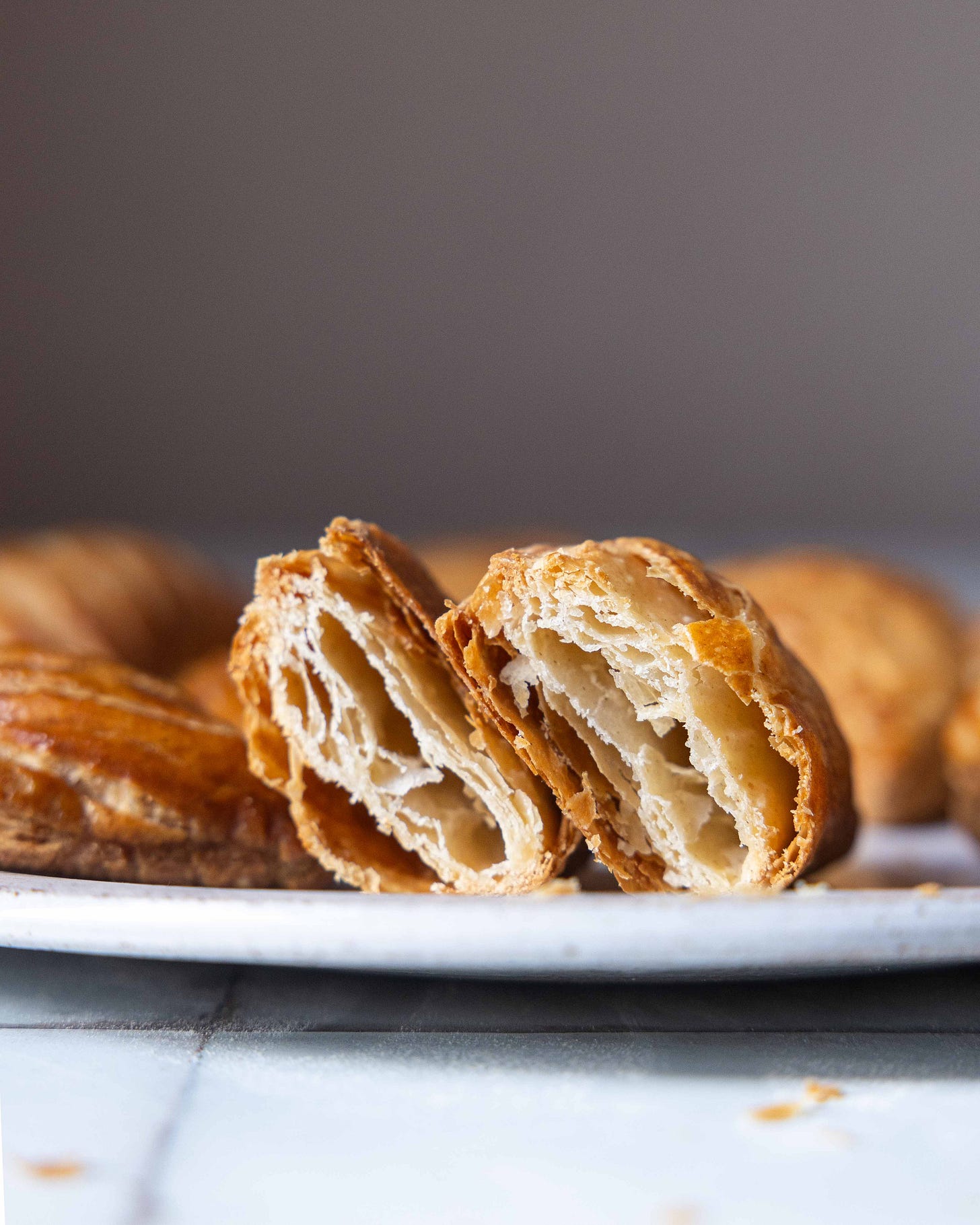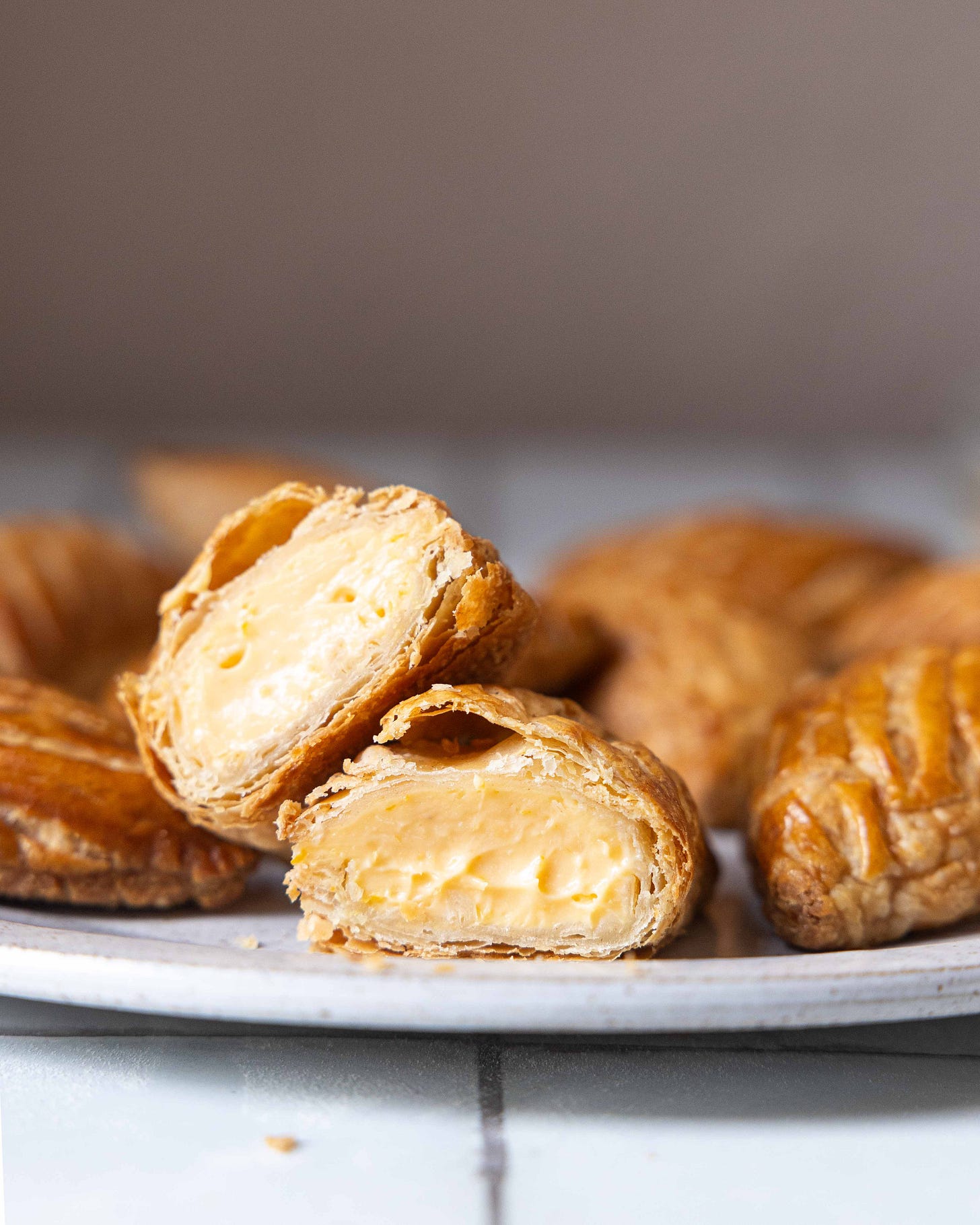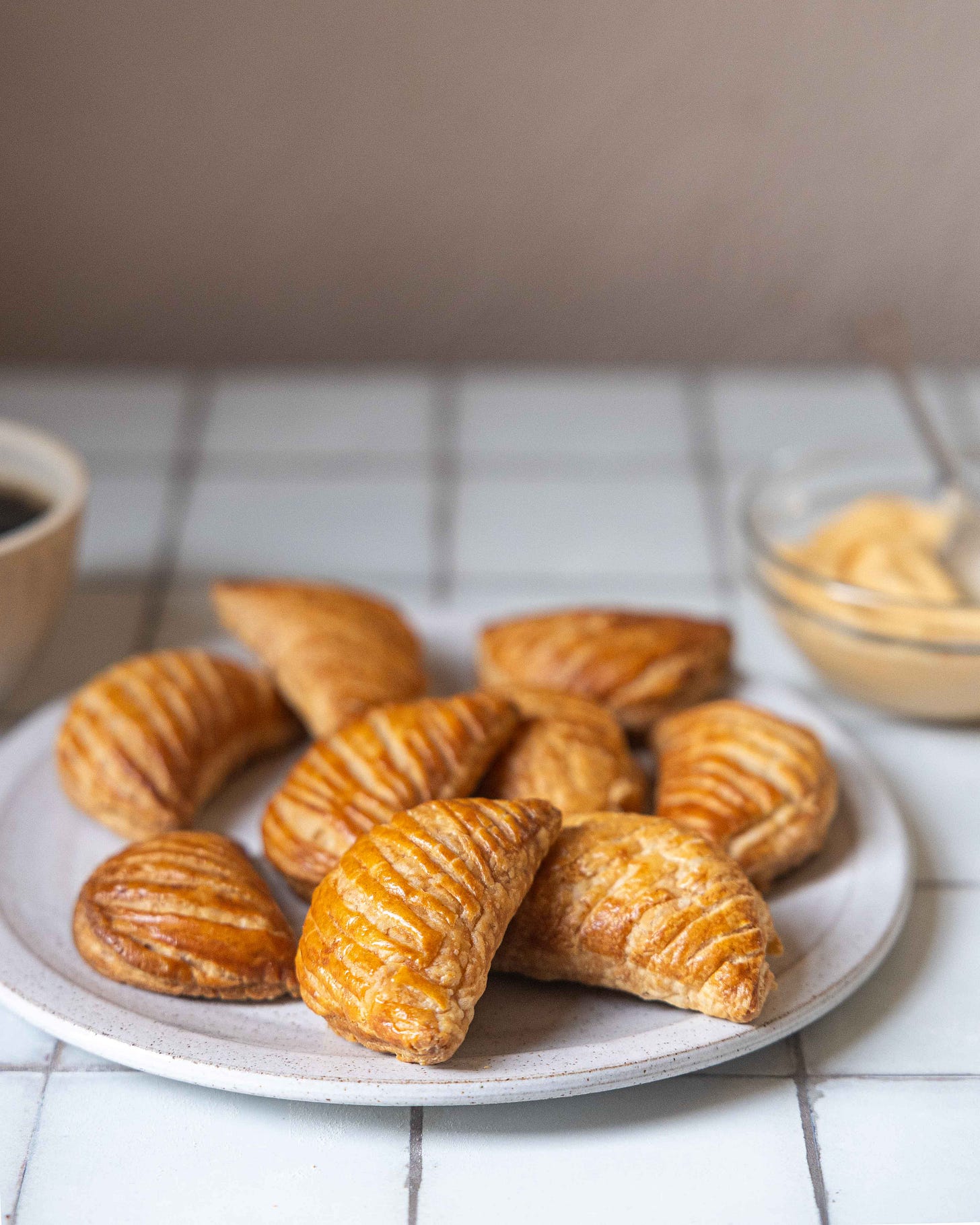🎉 Welcome to my newsletter, The Boy Who Bakes, a subscriber-supported newsletter, dedicated to all things baked. This is a post for paid subscribers, who receive exclusive weekly recipes. You can become a paid subscriber to get access to this recipe and every recipe moving forward plus you’ll also get access to the archive including every recipe posted on the newsletter. It costs just £5 a month and that helps me continue writing this newsletter. To subscribe, to either the paid or free newsletter, click the link below. 🎉
Hello, Happy Friday!
This past week the building work at the house entered the ‘ungodly loud’ stage; with saws and drills directly under my temporary kitchen all hours of the day. To get a bit of peace and find somewhere a little easier to work I have escaped up north to visit my parents and take over their kitchen for a week. The building work has been making me feel rather stressed and a bit overwhelmed and in the past couple weeks I have countered that with comfort food. For an alternative approach this week I tried going in the opposite direction, making more of a project bake, something to lose myself in.
I had this idea a few weeks ago: to make a small turnover-style pastry but to leave it unfilled when the pastry is baked in an attempt to create a cavity that can be filled once baked and cooled. The idea was to use a filling that couldn’t be baked, a ganache maybe? Or a cream filling? I ended up settling on using a variation of a favourite curd, a very thick lemon curd that I have used in the past as a tart or cake filling. It is thick and incredibly creamy and still deliciously tangy. As we are in the middle of citrus season, I decided to switch out the lemon and use blood orange instead. This turned out to be a problem, but I’ll get to that in a minute.
The orange cream is a version of a classic lemon curd, but the ratios used are changed slightly, as is the method. The finished texture is much thicker than a classic curd, and once chilled, it holds its shape beautifully, making it perfect as a filling for tarts or cakes. This style of curd was widely popularised by
when she was working with pastry chef Pierre Hermé on his English-language cookbooks in the late 90s and early 2000s. A similar recipe, from , in the Tartine cookbook, also helped push this style of recipe into the public imagination (her lemon tart at Tartine is simple perfection).To encase this delicious (eventually) cream, I wanted a light and flaky pastry, so obviously I turned to rough puff pastry. While I am one of those people that does actually quite enjoy making puff pastry the traditional way, I understand that not everyone has the patience or desire. Thankfully, rough puff pastry is a truly excellent alternative. Still incredibly flaky, it is just easier to make, less fussy, and more user-friendly. The recipe below is enough to make 12 small hand pies, but should you want something a little more substantial, feel free to make them larger, making a smaller batch of pies.
The Case For Citric Acid
Before we get to the final recipe, let's talk about the cream because it took a few tries to make this as tasty as I intended. Oranges have less acid than lemons, and so less sugar is generally used to prevent the curd from becoming too sweet. This lack of acid can make you run into a problem, an unfortunately bland curd, the butter masking any of those bright citrus notes. This is especially true with this cream style of curd, which uses a significantly large proportion of butter. The first test of this recipe was just, meh.
The easiest way to counter this problem is to use a 1:2 blend of lemon and orange juice. The acidity and brightness of the lemon help to balance everything in the curd. This works well, but I really wanted this to be an orange curd where the orange flavour was punchy.
The answer to this quandary was simple: citric acid. Whilst this is not an ingredient you often find in home kitchens, it is a regular in restaurant kitchens, and I think it has lots of uses in our own home baking. The citric acid works brilliantly in this recipe, but I also use it to make a sour sugar coating for pâte de fruit, giving them sour gummy candy vibes. You can add it to a citrus buttercream to make it brighter and zingy, or any buttercream that just needs a little lift. It can be used to temper sweetness in a sorbet or added to candied orange to ensure they’re still bright and zesty. You also only ever need very small amounts of the stuff, so buying a single pack will last you a very long time. If you don’t want to buy any, don’t worry; I have also provided a recipe using only real citrus, which is still very good.
Keep reading with a 7-day free trial
Subscribe to The Boy Who Bakes to keep reading this post and get 7 days of free access to the full post archives.







